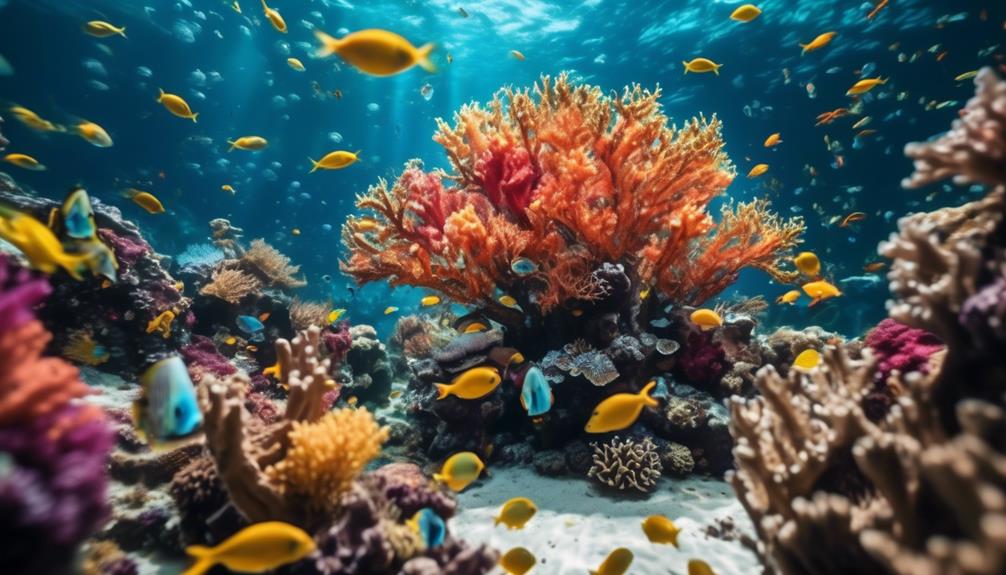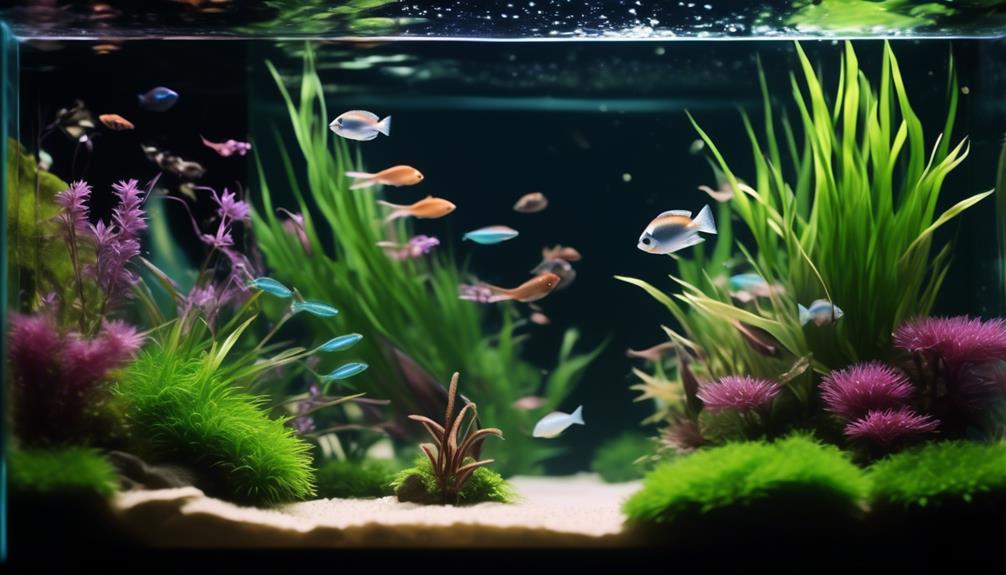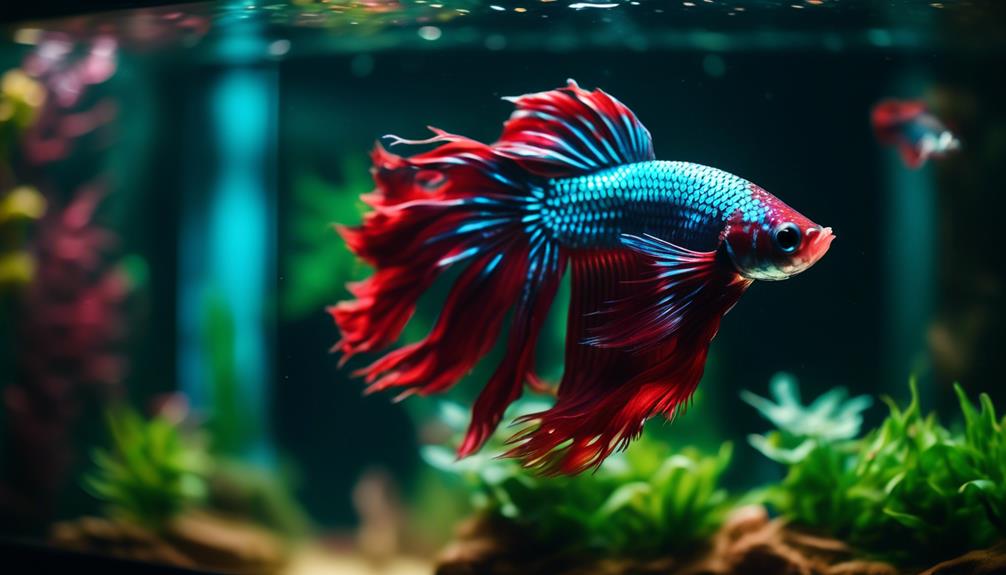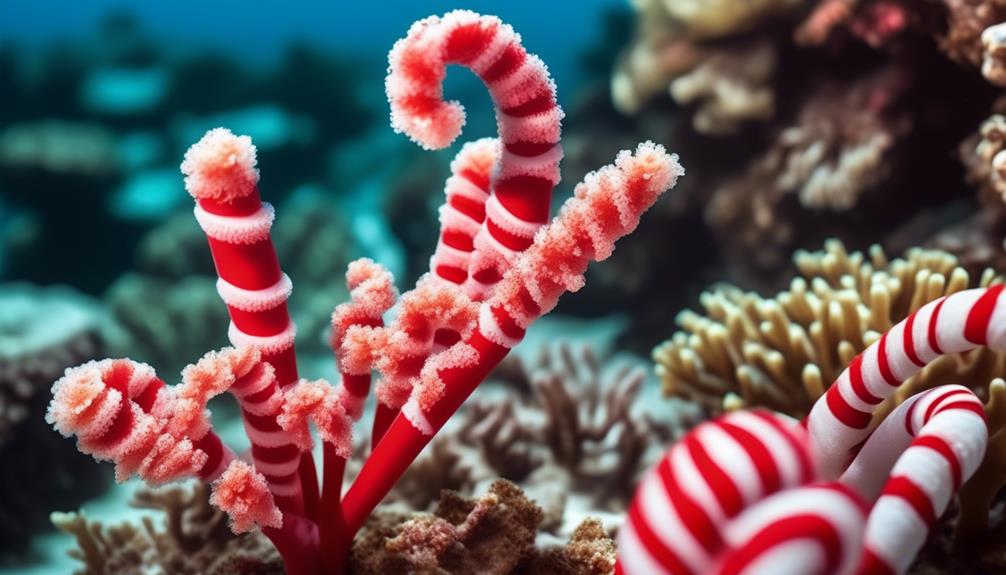The world of freshwater fish is home to a multitude of fascinating and captivating species, each with its own unique traits and behaviors. Among these, the Panda Loach stands out as a truly enigmatic and elusive creature. Its origins in the mountain streams of China add to its air of mystery, as do the challenges inherent in its care and breeding.
For those intrigued by the allure of this mesmerizing fish, delving into the intricacies of its existence is an opportunity to uncover its secrets and unlock the key to successfully keeping it in captivity. So, let us embark on a journey into the world of the Panda Loach, where we will unravel its enigma and explore the captivating nature of this elusive species.
Key Takeaways
- The Panda Loach is a rare and challenging fish to source and sustain in captivity.
- It is recommended for aquarists who want to contribute to conservation efforts.
- Panda Loaches require a balanced diet with plant or vegetable matter and should avoid excessive protein.
- They are peaceful and small in size, making them compatible with other species of loaches, tetras, rasboras, and guppies.
General Information

The Panda Loach, scientifically known as Yaoshania Pachychilus, is a captivating freshwater fish that offers both beauty and intrigue to aquarium enthusiasts. This rare species originates from the mountain streams in the Guanxi region of China. Due to its rarity, sourcing difficulties arise for those seeking to add it to their tanks.
However, for aquarists who are passionate about conservation efforts, the Panda Loach is an ideal choice. It requires a balanced diet with plant or vegetable matter, as excessive protein can be detrimental to its health. These peaceful fish thrive in groups of five or more, making a 40 to 50-gallon tank the recommended size.
With strong water filtration and appropriate water current, the Panda Loach can be successfully kept and admired while contributing to conservation efforts.
Care and Tank Setup
Originating from the mountain streams of the Guanxi region in China, the care and tank setup for the captivating Panda Loach require specific considerations to create a suitable and thriving environment for this rare species.
As these loaches are considered rare in their native habitat, aquarists who choose to keep them can contribute to conservation efforts by providing a safe haven in captivity.
To ensure their well-being, it is important to maintain proper water parameters. Panda Loaches prefer cold water temperatures ranging from 64 to 72 degrees Fahrenheit. A strong water filter and appropriate water current are also necessary to mimic their natural habitat.
Additionally, a bright environment with live plants is recommended for oxygenation and enrichment.
Lifespan and Health

Panda Loaches have an average lifespan of 6 to 8 years, although their lifespan may decrease significantly in captivity due to their sensitivity to water and tank parameter fluctuations. To ensure the health and longevity of these enigmatic creatures, it is crucial to employ disease prevention techniques and provide optimal care.
Here are some key points to consider:
- Lifespan variations: While the average lifespan of Panda Loaches is 6 to 8 years, it is important to note that individual variations may occur. Factors such as genetics, diet, water quality, and stress levels can influence their lifespan.
- Disease prevention techniques: To prevent diseases such as Ich, Fin Rot, and bacterial/parasitic infections, it is essential to maintain a clean and well-maintained tank. Regular water changes, proper filtration, and monitoring of water parameters are crucial. Additionally, providing a balanced diet and avoiding excessive protein intake can contribute to their overall health.
- Regular health checks: Monitoring the behavior, appetite, and physical appearance of Panda Loaches is essential. Any signs of illness or abnormalities should be addressed promptly. Consulting with a veterinarian who specializes in aquatic animals can provide valuable guidance in maintaining their health and well-being.
Tank Mates
When considering tank mates for the peaceful and small-sized Panda Loach, it is important to choose freshwater fish that tolerate the same water parameters and provide enough space for growth. Creating a peaceful community tank requires selecting compatible tank mates that will coexist harmoniously.
The Panda Loach can be paired with other species of Loaches, Tetras, Rasboras, and Guppies. It is also possible to introduce shrimp or snails to the tank. Non-territorial and similar-sized freshwater fish make good companions for the Panda Loach.
Breeding Challenges

Breeding the elusive Panda Loach in captivity presents significant challenges due to the specific water and environmental parameters required for successful reproduction. These breeding difficulties have implications for conservation efforts and the sustainability of this rare species.
To convey a deeper understanding of the challenges faced, consider the following sub-lists:
- Water Parameters:
- Maintaining a pH level between 6.5 and 7.5 is crucial for breeding success.
- Water hardness should be kept within the range of 5 to 12 dH.
- The ideal temperature for breeding is around 72 degrees Fahrenheit.
- Environmental Conditions:
- Providing a well-established tank with live plants, wood debris, and a sand or gravel substrate is essential to mimic the natural habitat.
- Simulating natural water flow and providing hiding places for the Panda Loach are necessary for successful breeding.
- Ensuring the breeding tank has a proper filtration system to maintain optimal water quality is crucial.
- Reproductive Behavior:
- Identifying the sex of the Panda Loaches is a crucial step in breeding. Males have a straighter body and elongated fins, while females may have a rounder, paler belly and shorter fins.
- Separating adult Panda Loaches from the breeding tank is necessary to prevent them from eating the eggs.
- Monitoring water parameters, maintaining cleanliness, and providing appropriate food for the newly hatched fry are crucial for their growth and survival.
Breeding the Panda Loach is a challenging endeavor, but it is essential for the conservation efforts of this rare species. By understanding and addressing these difficulties, aquarists can contribute to the sustainability and preservation of the remarkable Panda Loach.
Determining Gender
To successfully breed the Panda Loach, it is crucial to be able to determine the gender of these elusive freshwater fish. However, determining the gender of Panda Loaches can be quite challenging. Males tend to have a straighter body and elongated fins, while females may have a rounder and paler belly with shorter fins. These subtle differences in appearance can help differentiate between the sexes.
It is recommended to observe the fish closely and compare their physical characteristics to accurately identify their gender. Breeding difficulties arise due to the specific water and environment parameters required for successful reproduction. Despite these challenges, with proper equipment and care, it is possible to breed Panda Loaches and contribute to the conservation efforts of this rare species.
Setting up a Breeding Tank

Creating an optimal environment is crucial when setting up a breeding tank for Panda Loaches. To ensure successful breeding, consider the following breeding tank requirements:
Tank Size and Setup:
- Provide a spacious tank with a capacity of at least 40 to 50 gallons.
- Use sand or gravel as substrate, allowing for natural behavior and egg deposition.
- Include wood debris and live plants to mimic their natural habitat.
Water Parameters:
- Maintain water temperature between 64 to 72 degrees Fahrenheit, replicating their preferred cold-water conditions.
- Install a strong water filter to maintain water quality, crucial for the health of the breeding pair and their fry.
- Monitor and maintain appropriate water parameters, such as pH and hardness, to ensure the well-being of the Panda Loaches.
Breeding Techniques and Strategies:
- Determine the sex of the Panda Loaches, with males having a straighter body and elongated fins, while females may have rounder, paler bellies and shorter fins.
- Prepare a separate breeding tank and transfer the breeding pair.
- Remove adult Panda Loaches once eggs are laid to prevent them from eating the eggs.
- After 24 to 48 hours, the eggs will hatch, and you can support the growth of the fry with infusoria.
- Regularly monitor water parameters and maintain cleanliness to ensure the survival and health of the fry.
Fry Growth and Maintenance
Fostering the growth and maintaining the health of Panda Loach fry requires careful attention to their diet, water conditions, and overall well-being.
Fry development is a critical stage that requires a balanced diet rich in protein and nutrients. Feed the fry with live or frozen foods such as baby brine shrimp, daphnia, or micro worms.
Monitor water parameters closely, as any fluctuations can be detrimental to the fry's health. Maintain clean water by performing regular water changes and keeping the tank well-filtered.
It is essential to ensure that the water temperature remains stable within the range of 72 to 78 degrees Fahrenheit. Regularly test the water for ammonia, nitrite, nitrate levels, and pH to ensure optimal conditions for the fry's growth.
Providing a stress-free environment with hiding places and gentle water flow will contribute to their overall well-being.
Frequently Asked Questions
How Can I Find and Purchase a Panda Loach for My Aquarium?
To find and purchase a Panda Loach for your aquarium, consider contacting reputable fish stores, online retailers, or specialized breeders. Ensure the seller follows ethical practices and offers healthy specimens. Compatible tank mates include other Loaches, Tetras, Rasboras, and Guppies.
Can Panda Loaches Be Kept in a Community Tank With Aggressive Fish?
Panda Loaches are peaceful freshwater fish that can be kept in a community tank with other peaceful tank mates. They prefer a natural habitat with cold water temperatures and thrive in groups.
What Are the Signs and Symptoms of Common Diseases That Affect Panda Loaches?
Signs and symptoms of common diseases in Panda Loaches include Ich, Fin Rot, and bacterial/parasitic infections. Preventive measures include maintaining clean water and avoiding high-protein diets. Treatment options include medication and addressing water quality issues.
Are Panda Loaches Suitable for Beginners in the Hobby of Fishkeeping?
Panda Loaches can be a challenging choice for beginners due to their specific care requirements and difficulty in sourcing. However, their peaceful nature, small size, and unique appearance make them an intriguing addition to an experienced aquarist's tank.
How Can I Ensure the Optimal Water Parameters for Breeding Panda Loaches in Captivity?
To ensure optimal water parameters for breeding panda loaches in captivity, it is crucial to maintain a separate breeding tank with specific conditions such as sand or gravel substrate, wood debris, and live plants. Regular monitoring of water quality and temperature is essential for successful breeding techniques.










